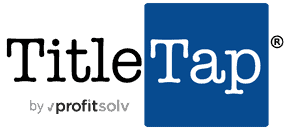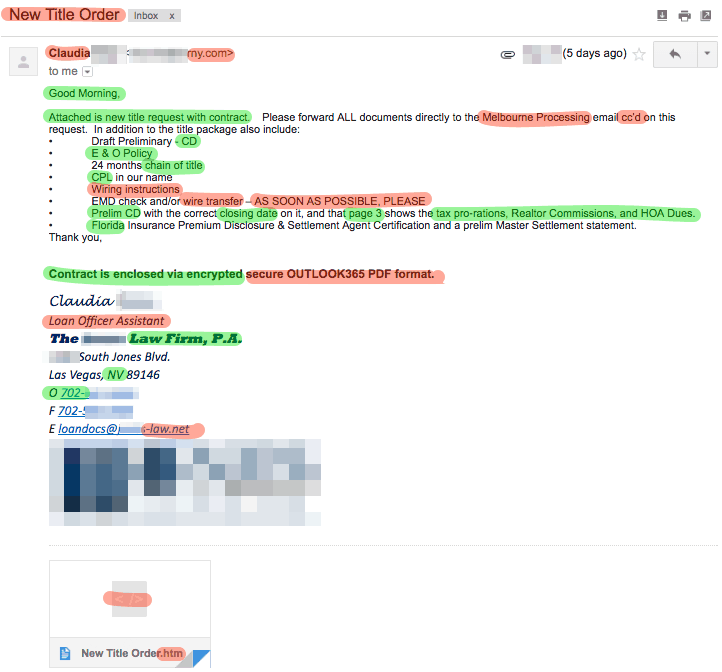With wire fraud at a record high, most industries are getting more strict with security requirements. This includes the land title industry. And with good reason – according the FBI, almost $1 billion was “diverted or attempted to be diverted” from real estate purchase transactions in 2017 alone. That number jumped from just $19 million in 2016.
Here is what one of our customers had to say:
“[TitleTap] uniquely represent[s] the title business by offering industry specific web design and other technology products that are sales driven and ensure compliance and security. [Their] team is responsive, thorough and committed to serving their customers and continues to be an amazing company to work with!”
Concerned about a hacked website and fraudulent email? You should be!
We received a bogus email and decided to dissect it for educational purposes. Here is what to look out for.
Disclosure
Please note that we are not law enforcement nor attorneys. As such the following is for entertainment and educational purposes only and not legal advice. Please refer to your underwriters, security partners, insurance providers, and the FBI guidelines on how to properly determine and handle wire fraud emails.
Example Wire Fraud Email
Green Flags – That Might Make This Email Seem Legitimate
-
- Subject: New Title Order
- “Attached is the new title request with contract.”
- “CD”
- “E & O Policy”
- “chain of title”
- “CPL” (Closing Protection Letter)
- “Wiring instructions”
- “Prelim CD”
- Mentioning of “page 3” and “tax pro-rations, Realtor Commissions, and HOA Dues”
- “Florida” (which is where I live)
- Legitimate, Generic Law Firm
- “Contract is enclosed via encrypted secure OUTLOOK365 PDF format.”
- Area Code matches Address
- “Realtor” is capitalized
Red Flags That Suggest This Email is Fraudulent
-
- I don’t recognize the name
- The email address doesn’t match the legitimate company name in the footer. (not entirely unusual)
- Mention of PDF attached but file is actually an HTML file.
- Mention of “Melbourne Processing” email “cc’d” (no one else is cc’d)
- Title ”Loan Officer Assistant” (says, I don’t recall this person but they are the assistant to the person that
- “…wire transfer – AS SOON AS POSSIBLE, PLEASE”
- “Contract is enclosed via encrypted secure OUTLOOK365 PDF format.”
- Law firm appears to be legit, but signature says “Las Vegas” while website says “North Carolina”
How to recognize a fraudulent email
The bottom line is to have one consistent way throughout your organization to give wiring instructions and make sure all parties involved are aware of this. It is also important to warn them about the fraudulent emails that have been circulating.
Here is a great video and instructions that ALTA released recently that you are welcome to share or post to your website to help educate the people you work with.
To make this easier for you we condensed this article into a PDF summary and example of a wire fraud email and how to recognize it.
View and download it here and share it with your staff, buyers, sellers, Realtors, Lenders, and other partners!


